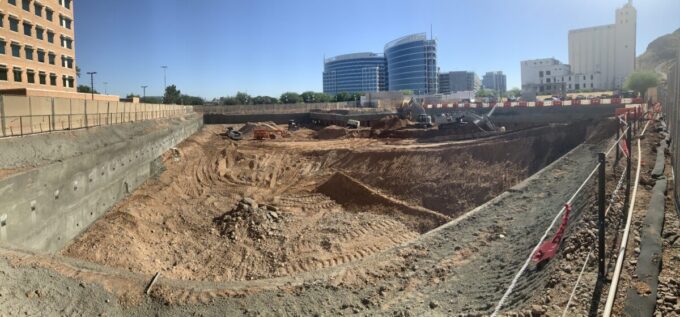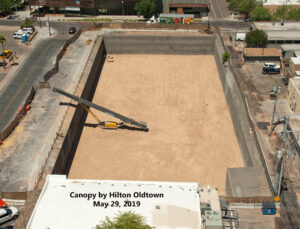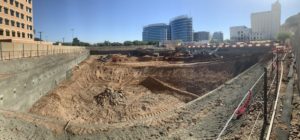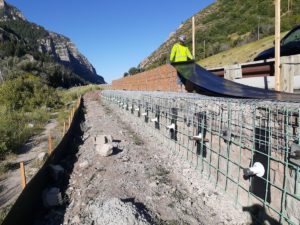Soil nail walls are a popular choice for stabilizing slopes and constructing retaining walls. This technique reinforces and stabilizes the soil by inserting steel bars (soil nails) into it. Therefore, let’s take a detailed look at how soil nail systems work, their uses, types of finishes available, and key limitations to consider.

Systems and Installation
Soil nailing is a ground stabilization method. The process typically includes:
- Excavation: First, remove soil to expose the face to be stabilized.
- Drilling: Next, drill holes at regular intervals.
- Inserting Nails: Insert steel bars (nails) into the drilled holes.
- Grouting: Fill the holes with grout to bond the nails to the surrounding soil.
- Facing: Finally, apply a facing material to protect the wall and enhance its appearance.
This method creates a composite mass of soil and nails that can withstand greater loads than untreated soil.
Uses for Soil Nail Walls
Versatility and use in various applications:
- Slope Stabilization: Prevent landslides and erosion on steep slopes.
- Retaining Walls: Construct walls for highways, railways, and other infrastructure.
- Deep Excavations: Support deep excavations in urban areas, reducing the need for large setbacks.
- Temporary Support: Provide temporary support (shoring) during construction phases.
Types of Finishes Available
Soil nail walls offer various finishes to meet aesthetic and functional requirements:
- Shotcrete: This popular choice provides a durable and continuous surface that can be left unfinished or sculpted into shapes.
- Precast Panels: These offer a more finished look with customizable designs.
- Vegetated Finish: This option is green and eco-friendly, allowing plants to grow over the surface.
- Brick or Stone Veneer: Enhance the aesthetic appeal, especially in urban settings.
Limitations to Consider
While soil nail walls are effective, they come with certain limitations:
- Soil Conditions: Unsuitable for very soft or highly plastic soils.
- Groundwater: High groundwater levels can complicate installation.
- Access: Requires equipment and space for drilling and grouting.
- Utilities: Take care to avoid any utilities within the soil nail zone and utility easements may be a constraint.
- Property Boundary: The location of the retaining wall may limit the ability to use soil nails that would be required to extend past the property boundary.
- Weather: Additionally, installation can be weather-dependent, particularly in regions with heavy rainfall.
Importance of Qualified Structural Engineering
An experienced structural engineer must design your soil nail wall to ensure its integrity and safety, adhering to local building codes and standards. This proper design minimizes the risk of failure and enhances the wall’s longevity.
In conclusion, soil nail walls provide a reliable solution for stabilizing slopes and constructing robust retaining walls. However, successful implementation requires careful consideration of site conditions and expert engineering. For tailored retaining wall or shoring designs, contact EVstudio’s team of experts today for comprehensive engineering guidance.










